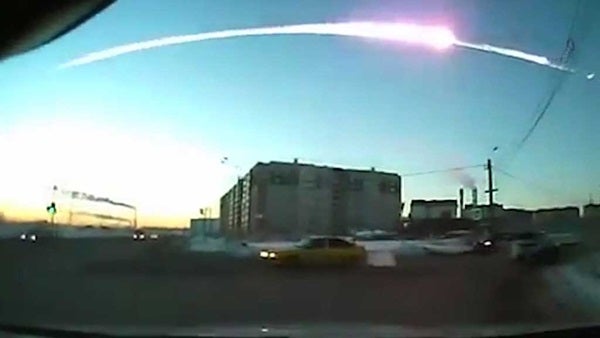Researchers call these murmurs “meteor sounds” or “electrophonic noise.” Unlike the shock wave, which can take seconds or even minutes to reach witnesses, these meteor-created audible phenomena occur simultaneously with the fireball’s passage. People commonly describe them as hissing or whooshing sounds, and they have been reported for centuries.
Professional astronomers once debunked these accounts as impossible and imaginary. But within the past few decades, ionospheric physicists have recognized that the reports are authentic manifestations of radio noise from a fireball’s plasma trail coupling with objects near the witnesses.
Researchers started to think the reports might be less science fiction and more science fact in the early 1980s. That’s when NASA began landing its space shuttles in Florida. As the vehicles re-entered the atmosphere above the southern United States, witnesses reported hearing such noises from these man-made fireballs. One woman in Texas likened the sound to “a skier sliding down a snowfield”; another witness compared it to “a motorboat cutting through choppy water.”
Within a week of the Chelyabinsk fireball, a Russian website collecting testimonials had 27 independent reports of people hearing weak but clear hissing sounds during its flight. Many compared the sound to a “Bengal sparkler,” a type of hand-held firework popular in Russia. And one person described the noise as “a low-level crackling hum very similar to what you hear near high-voltage power lines.”
Most of those who heard sounds noted that they could not determine either the source of the hissing or its direction — precisely the features that had puzzled previous observers. One witness, however, was certain the noise came from a telephone cable running from a street pole to her house.
The reports seem to have come only from observers in quiet rural areas. In the city itself, and in the vehicles carrying the now-ubiquitous dashcams, background mechanical noises appear to have masked the meteor’s sounds.
Astronomer and physicist Colin Keay of Australia’s University of Newcastle provided a physical explanation for such descriptions in the 1980s. Some radio laboratories and monitoring stations accidentally had detected radio noise in the 10-kilohertz band during some fireballs. Keay artificially generated such radio noise in his own lab and then exposed volunteers and various samples to it. The people perceived the whooshing noises to be coming from the test materials. The best substances — including dry pine needles, frizzy hair, and eyeglass frames — seemed more efficient at vibrating when exposed to the radio pulses.
The Chelyabinsk superbolide, it turns out, also had generated the same kind of real-time “whispering.”










